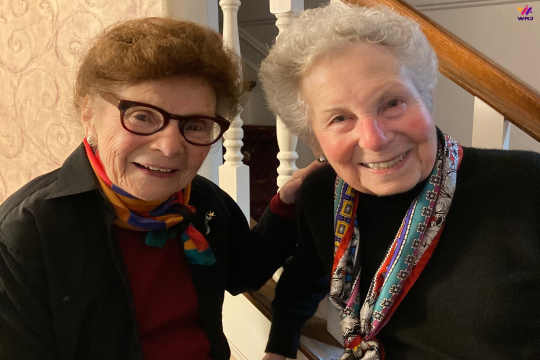
Accepting leadership responsibility can be challenging. Accepting the mantle of leadership was daunting back in the days of the Torah, and it can still be difficult today. Parallels between what Moses experienced and what we, leaders of the Women of Reform Judaism (WRJ), are many.
Parashat Va-eira tells Moses’s story between the burning bush and the exodus from Egypt. We are all familiar with the plagues, most of which occur in this parashah, as well as the hardening of Pharaoh's heart. Also within this parashah, Moses’s leadership journey is a study of nascent leadership that is not unlike what many of us experience today.
Moses accepted leadership reluctantly, indicating that he did not have the verbal competency to be a leader. Furthermore, he did not have a plan regarding how to lead the Israelites out of Egypt. Even with God’s help, he was not confident Pharaoh would allow the Israelite people to leave or that the people would follow him, but with help and guidance, Moses rose to the situation.
Belief in one’s own ability to be a leader does not come easily to many of us. I recall, many years ago, the first time my supervisor at work put me in charge of a major project, which called for me to lead my peers and some co-workers who were at higher levels than I was at the time. I questioned whether they would follow me. But, with support and encouragement, I gathered my wits and developed clear directions, goals, and deadlines.
My path in WRJ has been similar. I was first given the responsibility to lead one small project within my sisterhood. I wasn’t sure about leading other members, but with support from my sisterhood president, I took on the leadership role for that project, leading to many others locally and on the district and Board.
In Moses’s first attempt to rally the downtrodden Israelite people, they do not respond positively. He had not yet developed credibility and could not help them to see his vision. I imagine he felt frustration and wondered if he was capable of leadership. Moses was learning an important leadership lesson: Words alone, without action, are insufficient. He looked to his mentor, God, for assistance. Fortunately, God recognized that Moses needed both credible assistance and a way to demonstrate to the people that he had a credible vision. God provided Moses with help, Aaron, who had the apparent ability to produce actions—the plagues.
Building credibility in a new leader occurs on two levels. First, the mentor shows the developing leader that the leader is not left to struggle on their own. As an established leader, one walks the tightrope of offering support without taking over the process. An emerging leader may have a new or unique way of accomplishing a task. The established leader provides support as needed with the goal of helping the new leader become successful without unnecessary interference. Secondly, the emerging leader builds credibility with the mentor and the community. Keeping faith through words and actions often builds credibility itself.
In WRJ, at all levels —local, district, and Board—building leadership credibility is crucial. Providing guidance and support to—and developing trust with—women who are becoming leaders establishes credibility with and among new leaders. As president of my sisterhood, I learned this lesson early on when a new committee chair wanted to try something slightly different as part of her event. When other people balked at first because it “had never been done that way,” I encouraged her to explain her plan fully to the board to build up their comfort level. I also offered my support, leading to an event that gave her credibility as a leader and ultimately led to her becoming sisterhood president several years later!
Not every leadership experience is successful the first time. Moses had to approach Pharoah many times before he was able to lead the Israelites out of Egypt. He persevered! And he tried new actions. Each time he approached Pharoah with the same goal, he came with the ability to remedy the current plague and the ability to bring forth a new plague. Although Moses was eventually successful, he did not succeed by the end of Parashat Va-eira.
Not every task within WRJ is successful the first time, either. Sometimes a program gets less attendance, or a fundraiser raises less money than the organizer had hoped. This doesn’t mean the leader or the sisterhood/district/organization will never run another program or fundraiser. Instead, the leader, along with her mentor or other leaders, evaluates the results and tries something else.
Parashat Va-eira demonstrated the importance of three leadership qualities: confidence, credibility, and perseverance, all of which were portrayed by Moses and are important for us as WRJ leaders today. Moses’s leadership development continues on as the Torah continues. Our leadership journeys are ongoing, as well.
Related Posts

Andrea Stillman: A WRJ Leadership Spotlight


